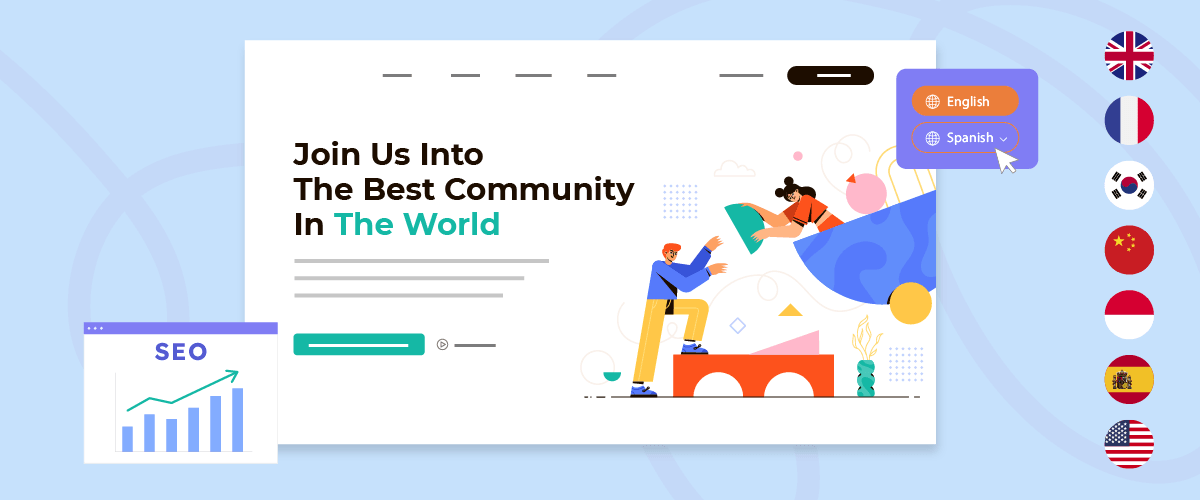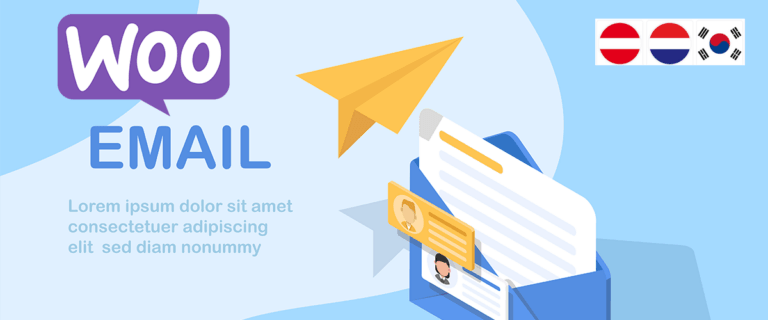Is your business the type of business that should be translated into multiple languages? If yes, then it is important to pay attention to SEO and indexing practices so that it can be accessed globally. However, translating website content into various languages is often a challenge for business owners, especially if the site is large-scale, with hundreds to thousands of pages.
The use of automatic translation tools allows fast translation of content, but their misuse can cause SEO and content indexing problems.
Therefore, this article will discuss best practices for managing SEO and translation for large-scale websites, ensuring that your translation efforts are well-spent and the targeted global audience can easily find your content.
Why should you care about automatic translation and indexing?
Providing diverse, multilingual content is indeed crucial for reaching a global audience. However, translation efforts can only be worthwhile if you choose the appropriate languages according to your target audience and index the content properly.
For instance, if you translate content into a language that is irrelevant to the target market, it will only garner a little attention since there is no web traffic from countries speaking that language.
Furthermore, if translated content is optimized and indexed properly, search engines will be able to find and display it in search results. Consequently, this will decrease the potential conversion rate for your products.
While translating web content into various languages can be done quickly using automatic translation tools, they can pose challenges for SEO. Search engines may require assistance in indexing automatically translated content if its quality could be better or if it needs to be optimized. Understanding the limitations and best practices for automatic translation can help mitigate these issues.
- Wasted resources: Automatic translation represents an investment in technology and content. With proper indexing, the resources spent on translating your site could be well-spent, as the content fails to attract and engage an international audience.
- Reduced visibility in search engines: If automatically translated content isn’t properly indexed, it won’t be visible in search engine results for queries conducted in those particular languages. This significantly reduces the potential reach of your content, making it invisible to a large portion of your target audience.
How to avoid that situation and translate your large site smoothly?
As previously explained, to avoid wasted resources and reduced visibility in search engines, it is important to understand what steps you can take to ensure smooth translation of large-scale websites. Here are some of them.
Identifying your target audience and languages
Understanding the target audience and their language preferences is key to ensuring the success of your website translation efforts. Here are some strategies you can implement.
Selecting the most important languages
Language profiling involves analyzing demographic data, language usage trends, and user behavior to identify the languages your website should support. By creating website content and your content to fit the nuances of your audience, you can improve engagement and user experience, ultimately boosting your site’s SEO performance.
You can take several steps to determine the language that will be added to your website.
The first step is to get to know site visitor analysis via Google Analytics. This platform provides reports on visitors’ country of origin and the languages they speak. You can find the report under the Audience > Geo > Language menu, allowing you to see the languages used by your website visitors.
This report view shows the distribution of languages used by your website users. As seen on the right, several language ratings are used by visitors, starting from English, German, French, Spanish and Japanese.
This can provide a clear picture of the important languages to add and translate on your website.

The second step is to check the popularity of the keywords you target, one of which is through Google Trends. Using Google Trends, you can see the keyword popularity of products/services by setting the destination country.
For example, you want to see the popularity of automatic translation keywords using English and French (traduction automatique) in France. Even though keywords in local languages are quite popular, you can see that the keyword “automatic translation” is now also increasing.
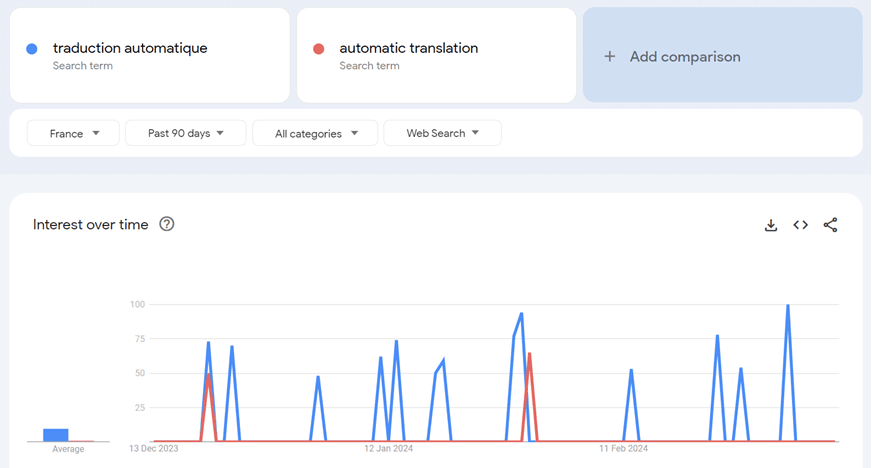
You can better understand language preferences for targeted keywords by checking Google Trends. Besides that, you can also compare several keywords at once.
Competitor analysis
Competitor analysis in multilingual SEO involves identifying your competitors in various language markets and analyzing their strategies. The goal is to understand how your competitors operate regarding language targeting, multilingual content structure, and targeted keywords. By understanding these aspects, you can gain valuable insights to formulate your SEO and translation strategies.
The steps involved in conducting competitor analysis in multilingual SEO include
- Identifying competitors: first, you must determine your competitors in different language markets. They could be local competitors in specific countries or global competitors operating in multiple languages.
- Analyzing competitors’ strategies: next, you must analyze how your competitors target languages. Do they focus on specific languages or translate their content into many languages? How do they structure their content in different languages? What keywords do they target in these languages?
- Understanding competitors’ strengths and weaknesses: you also need to assess the strengths and weaknesses of your competitors in their multilingual strategies. Are there any gaps you can exploit or strategies you can emulate? What makes your competitors excel in language targeting? For example, if a competitor only provides content in three languages, you could add several more languages as long as they are still relevant to the target countries.
- Adjusting your strategy: based on your analysis of competitors, you can change your SEO and translation strategies. You can identify languages that you may prioritize based on your competitors’ success in those languages. You can adjust your content structure and choose more effective keywords to attract organic traffic.
Doing so can optimize your strategy and improve your website’s position in global search rankings.
Keep the monitor and continue translating gradually
After analyzing competitors, it’s important to continue monitoring the translation process. Start by prioritizing translations into at least five key languages based on your target audience. This approach enables you to broaden your global reach and cater to diverse markets. Continuously monitoring these translations ensures that content remains accurate, relevant, and optimized for SEO. As you expand your translations, continue refining and updating them based on user feedback and performance analytics, ensuring that your website resonates with and is accessible to a broad international audience.
Technical SEO guide for multilingual sites
Translating content into various languages is not enough to make a website accessible globally. You need to ensure visibility in international markets and pay attention to technical aspects of SEO to make the site more easily reachable.
Here are some technical SEO guidelines that you can apply to multilingual sites.
Efficient crawling and indexing
One important aspect of technical SEO is ensuring smooth and effective crawling and indexing processes. Here are some things that can be done to make the crawling and indexing process more effective.
- Correct use of hreflang tags: The hreflang attribute is a tool to inform search engines of the correct language versions of your content. For example, if you have pages in English and Spanish, proper use of hreflang will prevent duplicate content issues and provide users with the appropriate language version, enhancing the user experience. Linguise automatically provides hreflang tags in your HTML files and automatically assigns hreflang codes to each website URL. Below is the implementation of the hreflang tag. You can see that each URL has its hreflang code, such as “en”, “nl”, and “fr”.

- Development of language-specific sitemaps: Every language iteration of your website should possess its sitemap, aiding search engines in discovering and indexing all individual pages. If using Linguise, it will automatically generate separate sitemaps for each language, which you will need to submit to Google Search Console, thus increasing the visibility of your website in targeted markets.
- Optimization of URL structure: A good URL structure, indicating language or region, helps search engines and users navigate your site more efficiently. Linguise can optimize the URL structure for your translated content according to best practices. There are several types of multilingual website URL structures that you can choose, make sure you choose the most appropriate one among the following types, namely specific subdomain domains, subdirectories, and parameter URLs, which you can read in full in managing multi-regional sites in the section using local specific URLs and the following image.
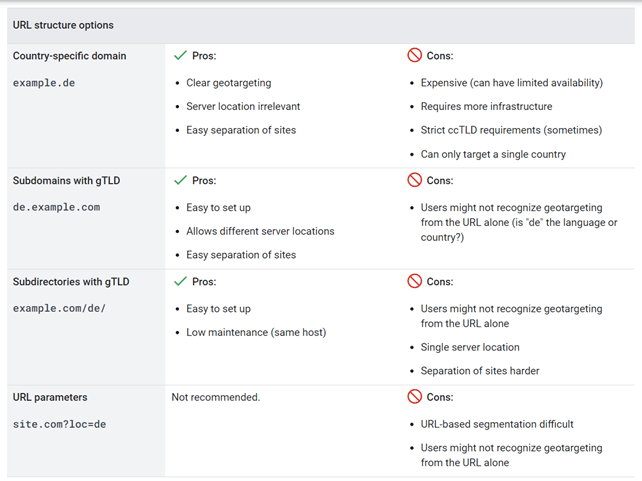
- Management of crawl budget: Prioritize the crawling of essential pages and prevent search engines from wasting resources on irrelevant pages, maximizing the effectiveness of your site’s indexing across all languages. Linguise helps manage the crawl budget by optimizing high-quality content to be prioritized, optimizing navigation structure to make it easier for crawlers to find main pages, and implementing techniques such as robots.txt and noindex to restrict access to unimportant pages. Crawl status can also be monitored in Google Search Console.
By employing these approaches, you can guarantee that the crawling and indexing procedures operate efficiently and proficiently for your multilingual website, thereby enhancing its visibility and accessibility across international markets.
Use Search Console effectively
The next SEO technique is effectively utilizing Google Search Console tools. Google Search Console can ensure that your content is accurately indexed and presented to the appropriate audience. Here are some steps to optimize the use of Search Console.
- Submit language-specific sitemaps: Sitemaps serve as guides for search engines to help them find and crawl all pages of your website. For multilingual sites, it’s important to submit separate sitemaps for each language version. This way, Google can accurately index your content for each target audience and ensure that users searching in a specific language are presented with the appropriate language version of your site. Linguise can help you generate and submit multilingual sitemaps to Google Search Console. The following is a display of a sitemap that has been successfully submitted to Search Console.
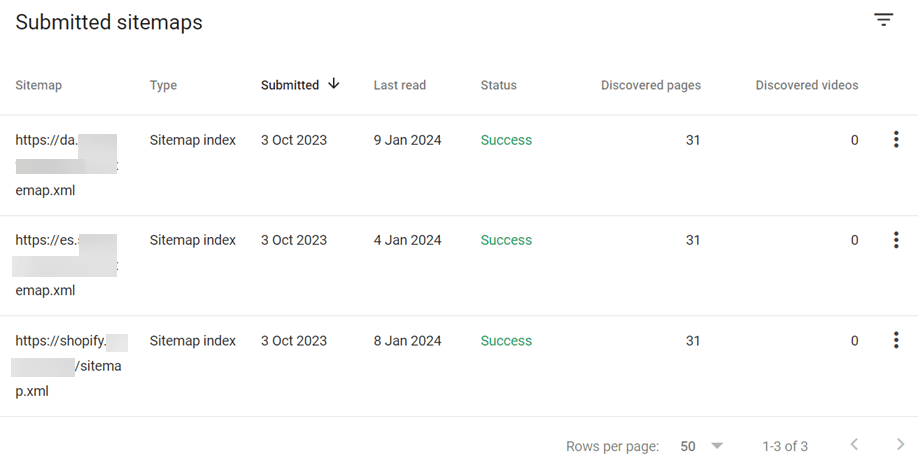
- Monitor international targeting: The International Targeting report in Search Console allows you to check for errors in your hreflang tag implementation. Hreflang tags are crucial for indicating the language or regional version of a page, ensuring that users in various regions or searching in different languages are served with the correct URLs in Google search results. Incorrect implementation can lead to issues such as duplicate content or incorrect versions being displayed, so it’s important to monitor and rectify any errors.
- Analyze search performance: This report provides valuable insights into how your website is performing in various countries and languages. You can filter data based on language or country, allowing you to identify areas that may require more SEO attention or content optimization. For example, suppose you see that your website is underperforming in certain language markets. In that case, you can focus on efforts to improve content, keywords, or other SEO factors for that language version. This analysis can be done via Search Console in the Performance section, then filter based on the country where you want to see the performance.
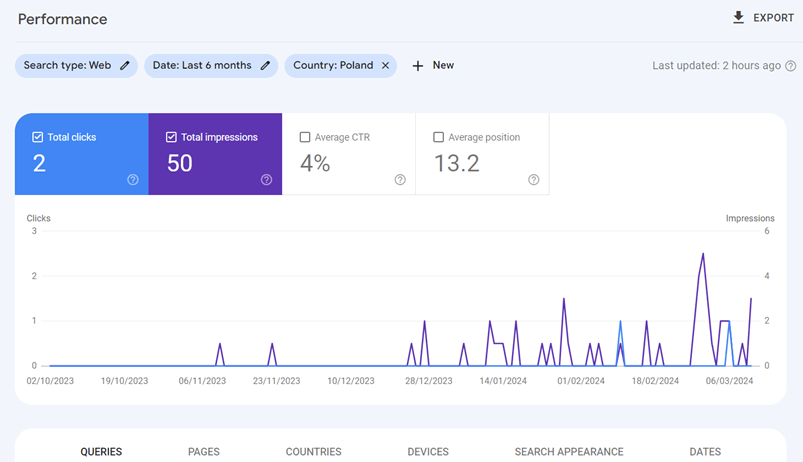
By following these steps, you can effectively optimize the use of Google Search Console tools to ensure that your multilingual website is properly indexed and visible to the targeted international audience.
How do you index automatic translations on a website with Linguise?
Now that you understand how to ensure smooth crawling and indexing processes on large-scale websites, you don’t need to worry because Linguise provides an integrated solution to effectively index automatically translated content on your website.
We are providing optimal URL structure and metadata for translated content, implementing correct hreflang tags and language sitemaps so that content can be recognized and indexed accurately by search engines.
Linguise translation service fully supports multilingual SEO, such as hreflang, canonical URLs, translated XML sitemaps, and more. Linguise’s translated content is also quickly indexed by major search engines as it has been tested in all webmaster tools.
With Linguise’s solution, index automatic translation on a website can be done quickly, and your translated content is optimized for SEO and indexed correctly.
So, keep your efforts translating large-scale websites from being used just because the content is poorly indexed. Trust Linguise’s integrated solution ensures that your automatically translated content is optimized according to the best practices of multilingual SEO and indexed correctly by major search engines! Register for a Linguise account now and add your website domain to increase audience reach and business performance in international markets.

